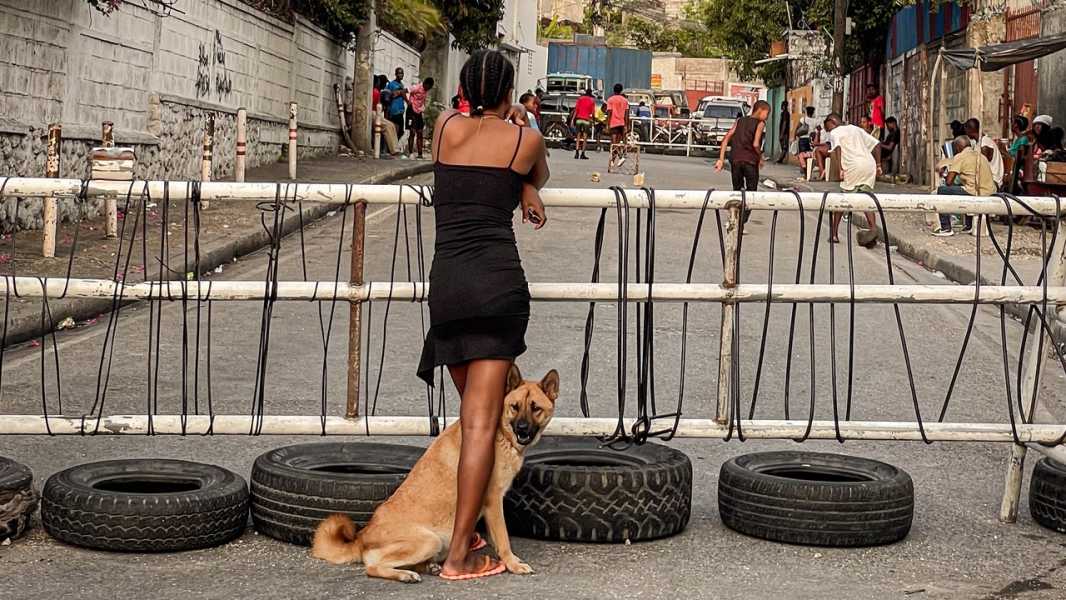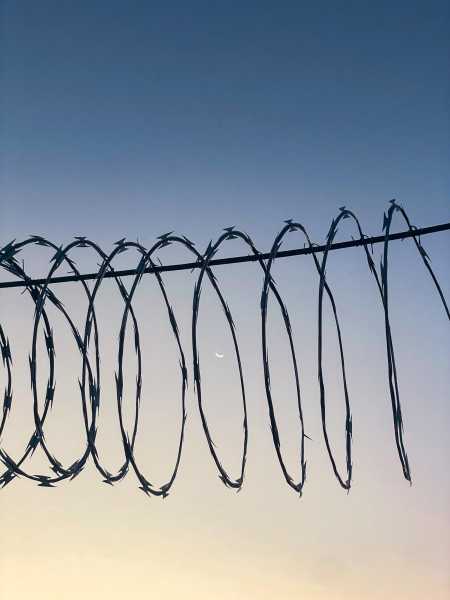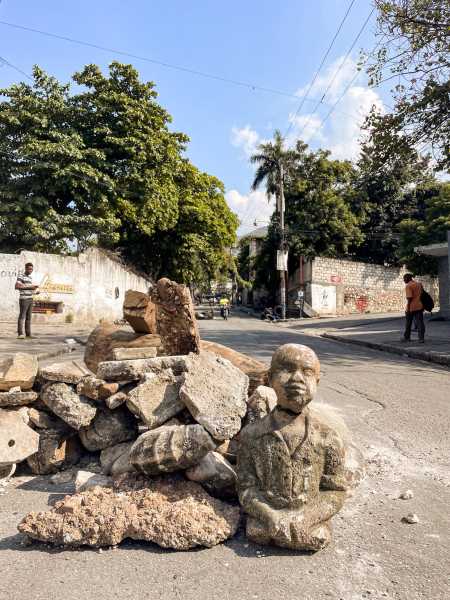
Save this storySave this storySave this storySave this story
I often receive condolence-type calls, e-mails, and texts about Haiti. Many of these messages are in response to the increasingly dire news in the press, some of which echoes what many of us in the global Haitian diaspora hear from our family and friends. More than fifteen hundred Haitians were killed during the first three months of this year, according to a recent United Nations High Commissioner for Human Rights report, which described the country’s situation as “cataclysmic.” Women and girls are routinely subjected to sexual violence. Access to food, water, education, and health care is becoming more limited, with more than four million Haitians, around a third of the population, living with food insecurity, and 1.4 million near starvation. Armed criminal groups have taken over entire neighborhoods in Port-au-Prince and the surrounding areas, carrying out mass prison breaks and attacks on the city’s airport, seaport, government buildings, police stations, schools, churches, hospitals, pharmacies, and banks, turning the capital into an “open air prison.”
Even those who know the country’s long and complex history will ask, “Why can’t Haiti catch a break?” We then revisit some abridged version of that history. In 1804, after a twelve-year revolution against French colonial rule, Haiti won its independence, which the United States and several European powers failed to recognize for decades. The world’s first Black republic was then forced to spend sixty years paying a hundred-and-fifty-million francs (now worth close to thirty billion dollars) indemnity to France. Americans invaded and then occupied Haiti for nineteen years at the beginning of the twentieth century. The country endured twenty-nine years of murderous dictatorship under François Duvalier and his son, Jean-Claude, until 1986. In 1991, a few months after Haiti’s first democratically elected President, Jean-Bertrand Aristide, took office, he was overthrown in a coup staged by a military whose members had been trained in the U.S. Aristide was elected again, then overthrown again, in 2004, in part owing to an armed rebellion led by Guy Philippe, who was later arrested by the U.S. government for money laundering related to drug trafficking. Last November, six years into his nine-year prison sentence, Philippe was deported by the U.S. to Haiti. He immediately aligned himself with armed groups and has now put himself forward as a Presidential candidate.
In 2010, the country was devastated by a 7.0-magnitude earthquake, which killed more than two hundred thousand people. Soon after, United Nations “peacekeepers” dumped feces in Haiti’s longest river, causing a cholera epidemic that killed more than ten thousand people and infected close to a million. For the past thirteen years, Haiti has been decimated by its ruling party, Parti Haïtien Tèt Kale (P.H.T.K.), which rose to power after a highly contested election in 2011. In that election, the U.S.—then represented by Secretary of State Hillary Clinton—and the Organization of American States helped the candidate who finished in third place, Michel Martelly, claim the top spot. Bankrolled by kidnapping, drug trafficking, business élites, and politicians, armed groups have multiplied under P.H.T.K, committing massacres that have been labelled crimes against humanity. In 2021, a marginally elected President, Jovenel Moïse, was assassinated in his bedroom, a crime for which many of those closest to him, including his wife, have been named as either accomplices or suspects.

An open-air prison in Port-au-Prince.
The unasked question remains, as W. E. B. Du Bois wrote in “The Souls of Black Folk,” “How does it feel to be a problem?”
I deeply honor Haiti’s spirit of resistance and long history of struggle, but I must admit that sometimes the answer to that question is that it hurts. Sometimes it hurts a lot, even when one is aware of the causes, including the fact that the weapons that have allowed gangs to take over the capital continue to flow freely from Miami and the Dominican Republic, despite a U.N. embargo. Internally, the poorest Haitians have been constantly thwarted by an unequal and stratified society, which labels rural people moun andeyò (outside people), and which is suffused with greedy and corrupt politicians and oligarchs who scorn the masses from whose tribulations they extract their wealth.
Recently, at a loved one’s funeral, in Michigan, the spectre of other Haitian deaths was once again on the minds of my extended family members. Everywhere we gather, Haiti is with us, as WhatsApp messages continuously stream in from those who chose to stay in Haiti and can’t leave because the main airport is closed, and others who have no other home. In Michigan, during chats between wake, funeral, and repast, elders brought up those who can’t get basic health care, much less a proper burial or any of the rituals that are among our most sacred obligations. “Not even a white sheet over those bodies on the street,” my mother-in-law, who is eighty-nine, said, after receiving yet another image of incinerated corpses in Port-au-Prince. At least after the 2010 earthquake, sheets were respectfully placed on the bodies pulled from the rubble. Back then, she said, the armed young men seemed to have some reverence for life and some fear of death.
Lately, some of our family gatherings are incantations of grief. But they can also turn into storytelling sessions of a different kind. They are opportunities for our elders to share something about Haiti beyond what our young ones, like everyone else, see on the news. The headlines bleed into their lives, too, as do the recycled tropes that paint us as ungovernable, failures, thugs, and even cannibals. As with the prayers that we recite over the dead, words still have power, the elders whisper. We must not keep repeating the worst, they say, and in their voices I hear an extra layer of distress. They fear that they may never see Haiti again. They fear that those in the next generation, some of whom have never been to Haiti, will let Haiti slip away, as though the country they see in the media—the trash-strewn streets and the barricades made from the shells of burnt cars, the young men brandishing weapons of war and the regular citizens using machetes to defend themselves—were part of some horror film that they can easily turn off. The elders remind us that we have been removed, at least physically, from all of this by only a single generation, if not less.
We are still human beings, the elders insist—“Se moun nou ye.” We are still wozo, like that irrepressible reed that grows all over Haiti. For a brief moment, I think someone might break into the Haitian national anthem or sing a few bars of the folk song “Ayiti Cheri.” (“Beloved Haiti, I had to leave you to understand.”) Instead, they hum the music that the wozo has inspired: “Nou se wozo / Menm si nou pliye, nou pap kase.” Even if we bend, we will not break.

In the capital, many residents have built barricades to deter armed criminal groups from entering their neighborhoods.
Except we are breaking. “It pains me to see people living in constant fear,” the Port-au-Prince-based novelist and poet Évelyne Trouillot recently wrote to me in an e-mail. “I dream of a country where children are not afraid to dream.” Internationally, U.S. deportations continue, Navy ships are ready to be deployed to intercept migrant boats, and Haitian asylum seekers could once again end up imprisoned on Guantánamo, as they did in the early nineteen-nineties. In conversations, whether with strangers or with younger family members, someone inevitably asks, “Is there any hope?”
I have hope, I say, because I grew up with elders, both in Haiti and here in the U.S., who often told us, “Depi gen souf gen espwa”—as long as there’s breath, there’s hope. I have hope, too, because the majority of Haitians are under twenty-five years old, as are many members of our family. Besides, how can we give in to despair with eleven million people’s lives in the balance? Better yet, how can we reignite that communal grit and resolve that inspired us to defeat the world’s greatest armies and then pin to our flag the motto “L’union fait la force”? Unity is strength.
The elders also remind us that Haiti is not just Port-au-Prince. As more and more of the capital’s residents are forced to return to homesteads and ancestral villages, the moun andeyò have much to teach other Haitians. “Historically, the moun andeyò have always been the preserver of Haiti’s cultural and traditional ethos,” Vivaldi Jean-Marie, a professor of African American and African-diaspora studies at Columbia University, told me. Rural Haitians, who have lived for generations without the support of the state, have had no choice but to rely on one another in close and extended family structures called lakou. “This shared awareness—I am because we are—will prevail beyond this difficult chapter in Haitian history,” Jean-Marie said.
Finally, I have hope because in Haiti, as the American writer and art collector Selden Rodman has written, “art is joy.” This remains true even as some of the country’s most treasured cultural institutions, including the National School of the Arts and the National Library, have been ransacked. In the summer of 2023, Carrefour Feuilles, a district in Port-au-Prince that many writers, visual artists, and musicians call home, was attacked by armed criminal groups. The onslaught led to a petition that collected close to five thousand signatures. It read in part, “How many more hundreds of our women and children must be raped, executed, burned before the public authorities do everything possible to put an end to the plague of gangs and their sponsors?”
A few days later, the homes of two of the signatories, the multimedia artist Lionel St. Eloi and the writer Gary Victor, were taken over by a gang. The last time I saw St. Eloi was in 2019, in the courtyard of Port-au-Prince’s Centre d’Art, where he had a series of metal birds on display, their bejewelled bodies and beaks pointing toward the sky. Allenby Augustin, the Centre d’Art’s executive director, recently described how some artists, afraid of having to suddenly flee their homes and leave their work behind, bring their pieces to the center or keep them in friends’ homes in different parts of the city. Others add the stray bullets that land inside their studios—bal pèdi or bal mawon—to their canvasses.
St. Eloi, the patriarch of a family of artists, had lived in Carrefour Feuilles since the seventies, working with young people there. “The youth who were neglected or who could not afford to go to school were taken in by our family,” one of St. Eloi’s sons, the musician Duckyns (Zikiki) St. Eloi, told me. “We taught them to paint, to play guitar, and to play the drums. Now they are hired to run errands for gangsters who put guns in their hands.” In spite of what has happened, he still believes that art can turn some things around. He recently sent me a picture of a work by his younger brother Anthony—an image depicting gang members wearing brightly colored balaclavas and holding pencils, a book, a paint palette, a camera, and a musical instrument. “If there are gangs, we’d be better off with art gangs,” Zikiki said. “Gangs that paint, make music, recite poetry. Art is how we bring our best face to the world. Art is how we dream.” ♦
Sourse: newyorker.com






